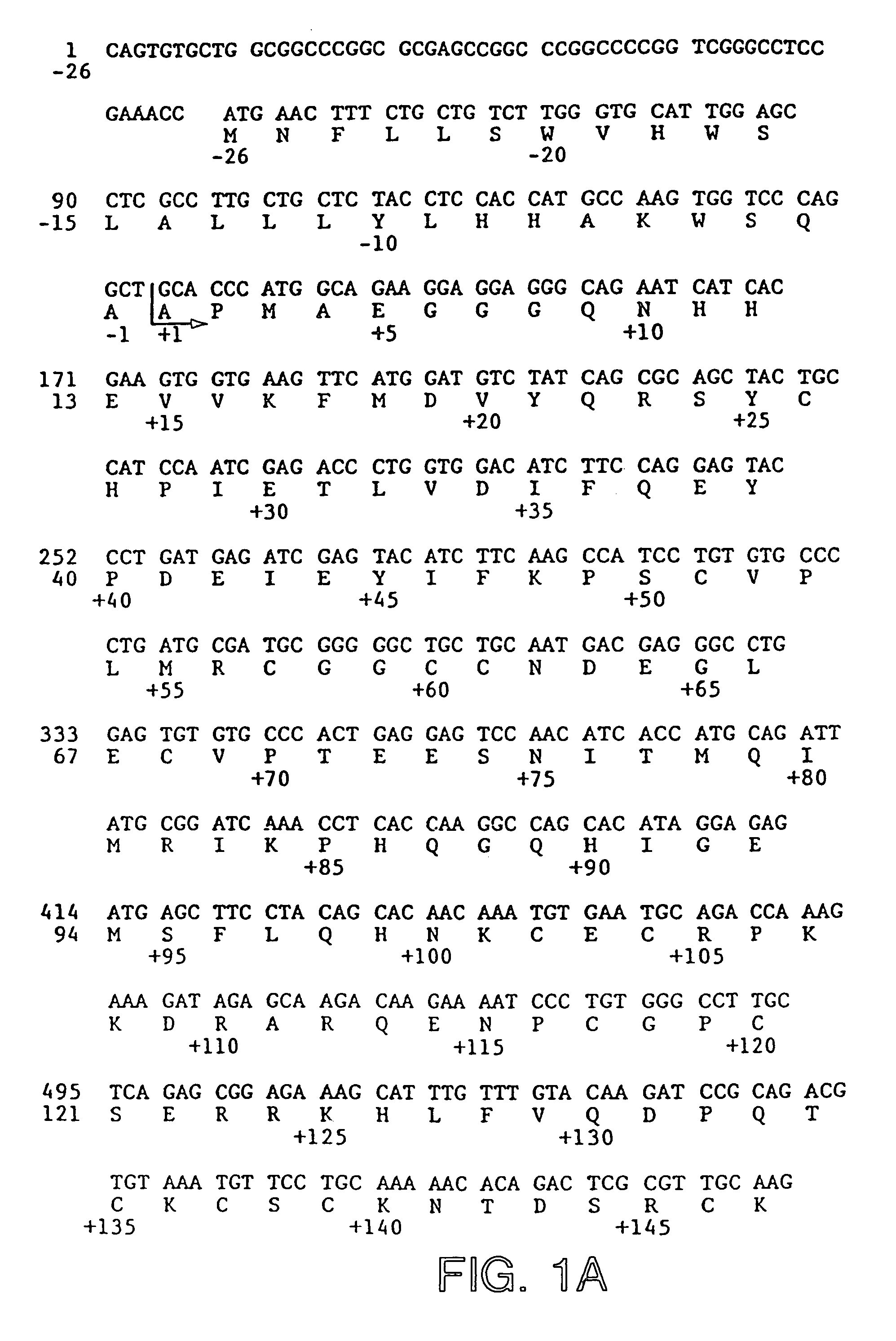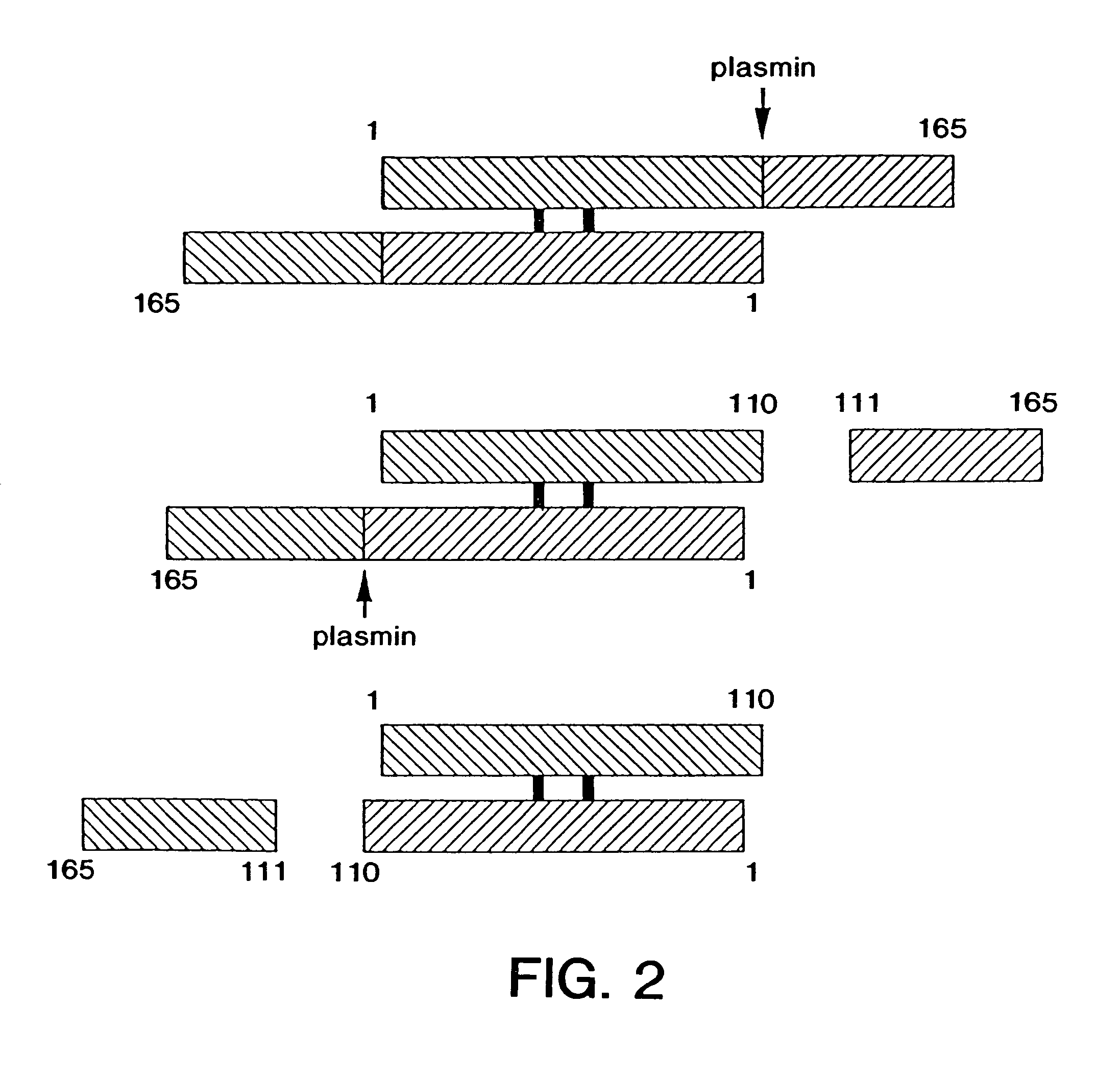Variants of vascular endothelial cell growth factor
a growth factor and vascular endothelial cell technology, applied in the field of vascular endothelial cell growth factor variants, can solve the problems of high cost, both in effort and expense, of recovering vegf, and the relative low concentration of fc protein, so as to reduce binding properties and reduce cost
- Summary
- Abstract
- Description
- Claims
- Application Information
AI Technical Summary
Benefits of technology
Problems solved by technology
Method used
Image
Examples
example i
[0161]Materials—Muta-gene phagemid in vitro mutagenesis kit, horse-radish peroxidase conjugated goat IgG specific for murine IgG, pre-stained low-range MW standards and Trans-Blot Transfer Medium (pure nitrocellulose membrane) were purchased from BioRad Laboratories (Richmond, Calif.). Qiagen plasmid Tip 100 kit and Sequenase version 2.0 were from Qiagen (Chatsworth, Calif.) and United States Biochemical (Cleveland, Ohio), respectively. SDS gels (4–20% gradient polyacrylamide) and pre-cut blotting paper were from Integrated Separations Systems (Natick, Mass.). SDS sample buffer (5× concentrate) and various restriction enzymes were from New England Biolabs (Beverly, Mass.). O-phenylenediamine, citrate phosphate buffers, sodium dodecyl sulfate, and H2O2 substrate tablets were purchased from Sigma (St. Louis, Mo.). BufferEZE formula 1 (transfer buffer) and X-OMat AR X-ray film were from Eastman Kodak Co. (Rochester, N.Y.). Maxosorb and Immunlon-1 microtiter plates were purchased from N...
example 2
[0206]The following example details the methodology generally employed to prepare the various mutants covered by the present invention. The basic expression vector was prepared as follows:
[0207]Vector SDVF165 containing the cDNA of VEGF165 was obtained and is depicted in FIG. 13 herein. The cDNA for VEGF165 was isolated from SDVF165 by restriction digestion with Hind III and Eco RI. This isolated insert was ligated into the pRK5 plasmid taking advantage to the existence therein of Eco RI and Hind III sites—see the construct as depicted in FIG. 14 hereof. The resultant plasmid was transformed into competent CJ236 E. coli cells to make a template for site-directed mutagenesis. The corresponding oligonucleotide containing the mutated site was then prepared—see infra—and the in vitro site-directed mutagenesis step was conducted in accordance with known procedures using the BioRad Muta-Gene mutagenesis kit. After sequencing to determine that the mutagenesized site was incorporated into t...
PUM
| Property | Measurement | Unit |
|---|---|---|
| Temperature | aaaaa | aaaaa |
| Temperature | aaaaa | aaaaa |
| Molar density | aaaaa | aaaaa |
Abstract
Description
Claims
Application Information
 Login to View More
Login to View More - R&D
- Intellectual Property
- Life Sciences
- Materials
- Tech Scout
- Unparalleled Data Quality
- Higher Quality Content
- 60% Fewer Hallucinations
Browse by: Latest US Patents, China's latest patents, Technical Efficacy Thesaurus, Application Domain, Technology Topic, Popular Technical Reports.
© 2025 PatSnap. All rights reserved.Legal|Privacy policy|Modern Slavery Act Transparency Statement|Sitemap|About US| Contact US: help@patsnap.com



